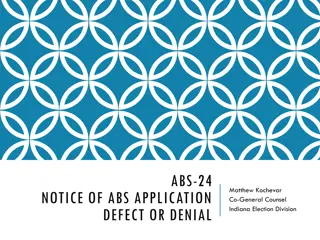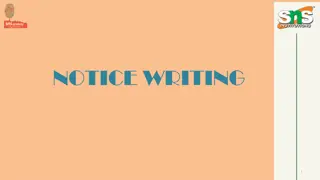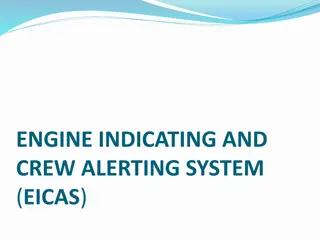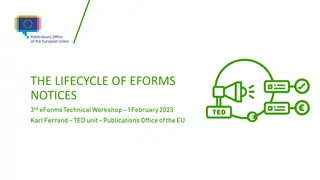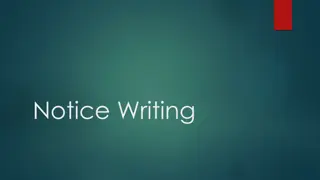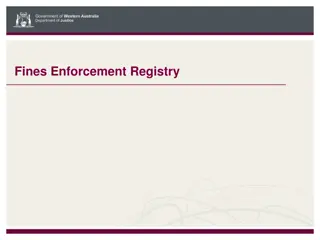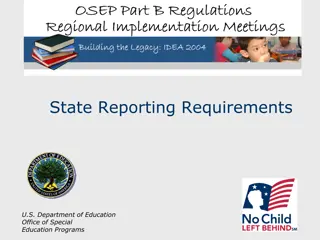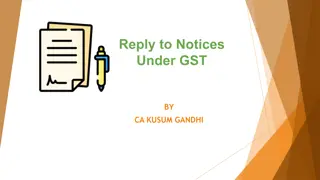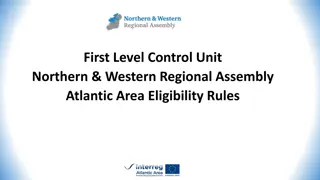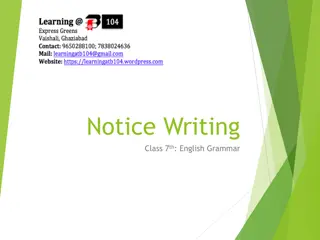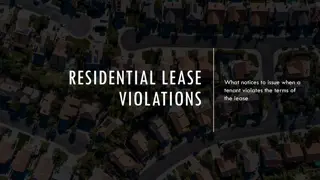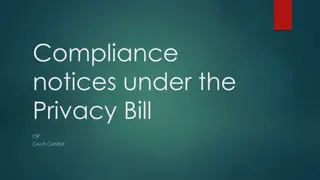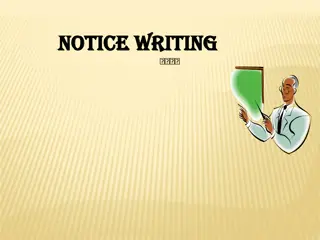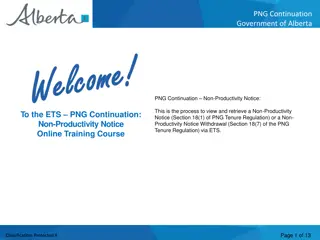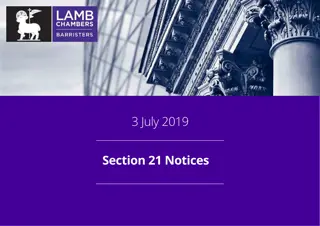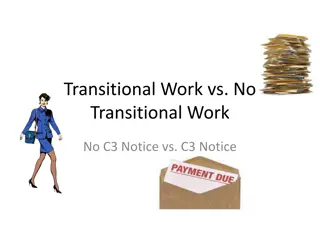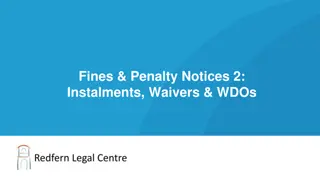Understanding Notices, Cautions, and Rules in School Settings
Notices, cautions, and rules play crucial roles in schools to provide information, warn about dangers, and establish guidelines. They are often written in imperatives to communicate commands or prohibitions clearly. Students must adhere to rules like coming on time, keeping classrooms clean, and listening to teachers. Understanding how notices, cautions, and rules are presented in school environments is essential for maintaining a safe and productive learning atmosphere.
Download Presentation

Please find below an Image/Link to download the presentation.
The content on the website is provided AS IS for your information and personal use only. It may not be sold, licensed, or shared on other websites without obtaining consent from the author. Download presentation by click this link. If you encounter any issues during the download, it is possible that the publisher has removed the file from their server.
E N D
Presentation Transcript
BRIGHT 1 Unit 11 Be quiet, please! Syda Production/hutterstock
What is a notice? A notice is a note or placard that gives information or a warning. What is a caution? A caution is to warn people about a dangerous situation.
What are these?
Most notices or cautions are written in imperatives. DO NOT ENTER STAND IN LINE KEEP SILENT
However, some notices and cautions are written like this (No + Verb ing).
Rules in the classroom 1. Students must come on time. 2. Students must keep the classroom clean. 3. Students must listen to teacher when the teacher is talking. 4. Students must not do any harm 5. Students must appreciate others. Clipart
Must and must not are often used to express commands and prohibitions. For giving commands Subject Must You Verb come Object/Adverb early. must We study hard. For prohibiting Subject Must You Verb come Object/Adverb late. must not We play truant.
Now, can you mention notice, caution or rules in your school? Clipart



